Teardowns and Disassembly
A Peek Inside the 6D
Of course we had to do it. We tried limiting ourselves to some size comparisons with the 5D II and 5D III.
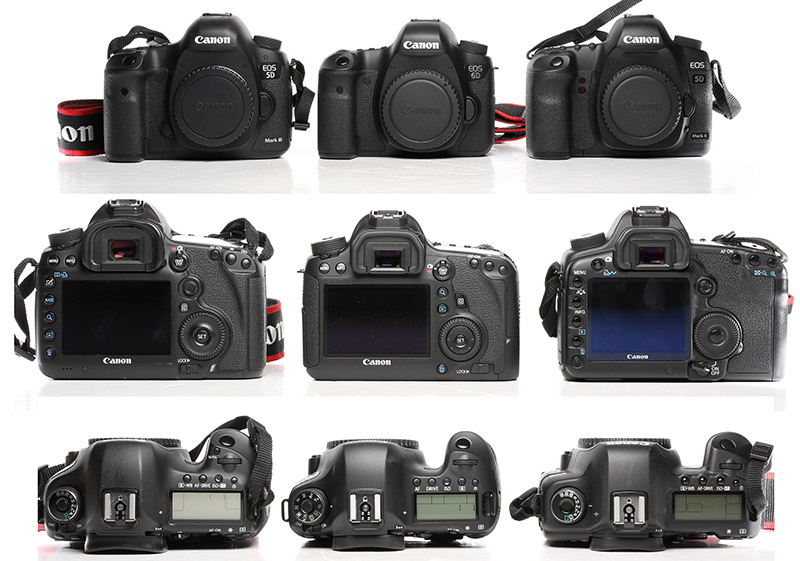
Left to right: 5D III, 6D, 5D II
So, yeah, the 6d is smaller and all. But that wasn’t quite what we wanted to see. So, as is our habit, a few screws here and a few screws there and . . . .
Disassmebling
One thing was noted right away. Where the other Canon cameras tend to come apart in modules (you can take off the back, or take off the front, etc.) the 6D was a bit more interconnected. To get the back off required removing the sides and a bit of the bottom for example. A bit of a pain for the exploring types, but I would imagine it also gives more structural support.
The body is basically plastic, but like most modern plastics it’s thick and solid. Never a thought that a screw was going to strip out during disassembly. Anyway, after a bit the back was off, and looks, from the inside, pretty similar to all the other Canon backs.

Inside of back assembly
Back to the back of the camera, things are nicely laid out. Flexes have short, neat runs. The shield tape in the lower right isn’t just laid on top, it runs around to the bottom and sides of the assembly for 1/2 inch or so. Under the tape is both an aluminum shield and then a soft rubberized shield. It seems a lot of attention is payed to electrical isolation.
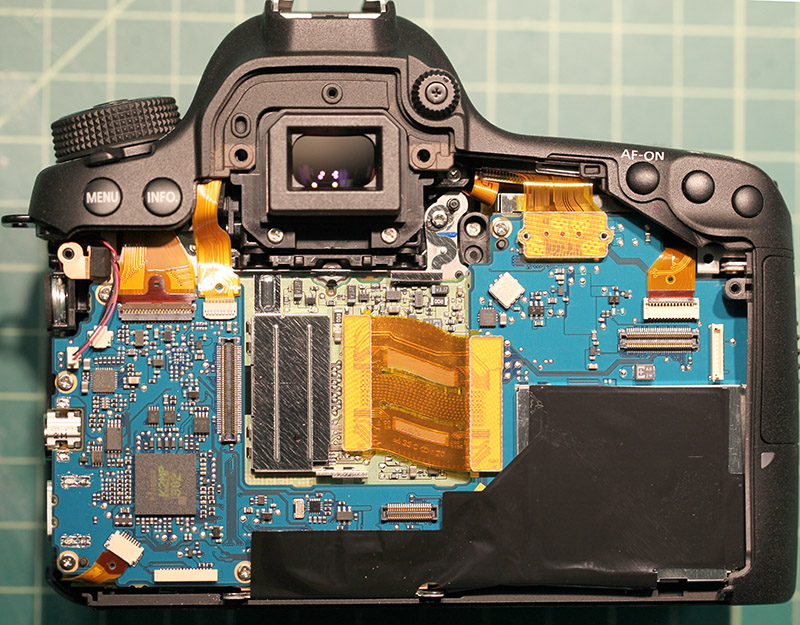
For the electroGeeky among us (you know who you are) a chip close up so you can tell us what the various chips are. I’m way too far behind today to look them all up.
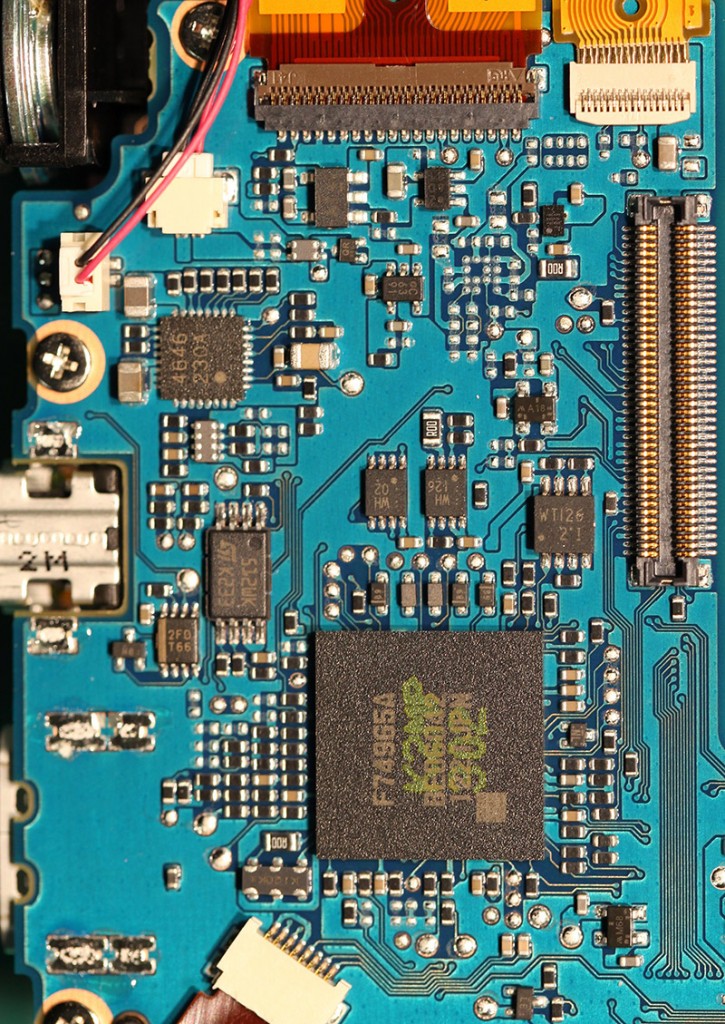
And removing the shielding on the right side shows us that hefty Digic 5+ chip and a companion.
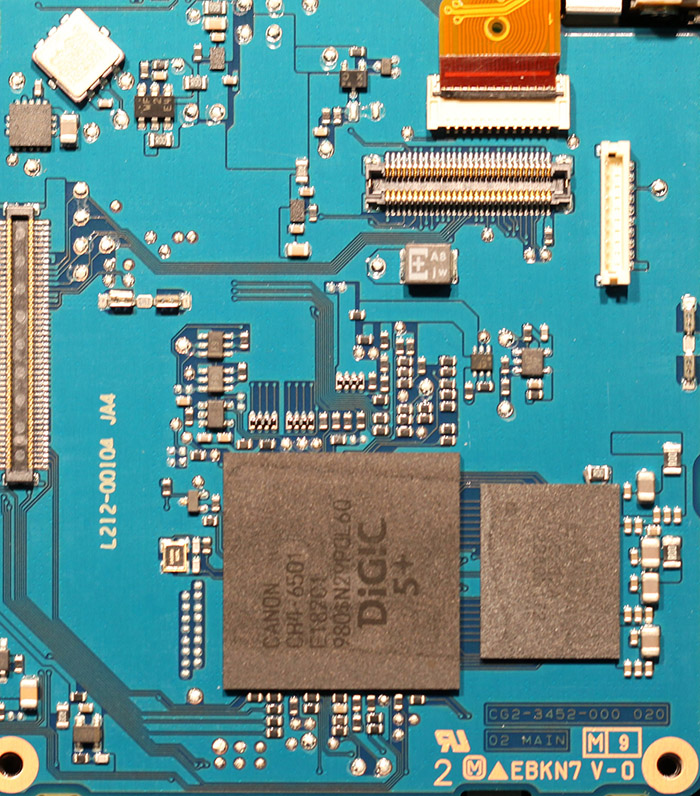
The SD card slot is affixed to the underside of the PCB, along with a few other chips.
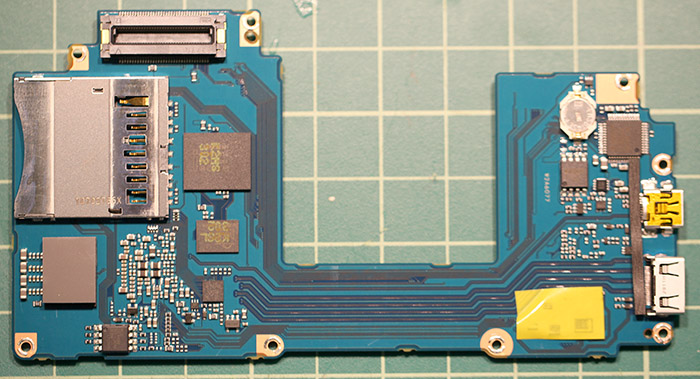
That appears to be the date-time battery over on the right, so you won’t be taking it out to do one of those ‘hard resets’ so often spoken of, yet so rarely successful.

Underneath the PCB, you can see how clean and nicely laid out all of this is. No long wire or flexes running hither and yon, every connection exactly where it needs to be when the board is reseated, and more metal shielding almost entirely separating the circuitry back here from the magnets and motors up front.
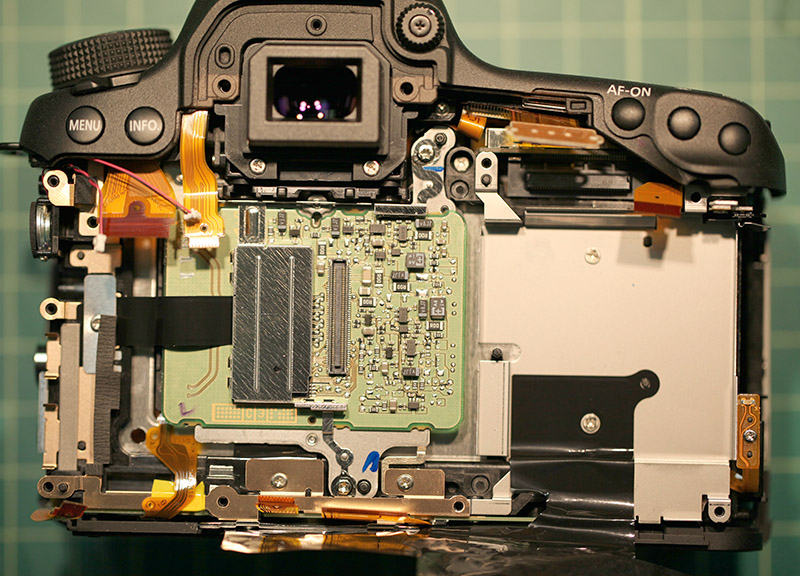
And, of course, none of this makes a bit of difference when you go out and take pictures. But I always like seeing nice clean engineering, and this is another example of it.
RogerCicala
Lensrentals.com
November, 2012
Author: Roger Cicala
I’m Roger and I am the founder of Lensrentals.com. Hailed as one of the optic nerds here, I enjoy shooting collimated light through 30X microscope objectives in my spare time. When I do take real pictures I like using something different: a Medium format, or Pentax K1, or a Sony RX1R.
-
Jim
-
Jim
-
Jim
-
Jim
-
Ching
-
Anisotropic
-
Javier
-
ThomasTCG
-
Carlos Taylhardat

